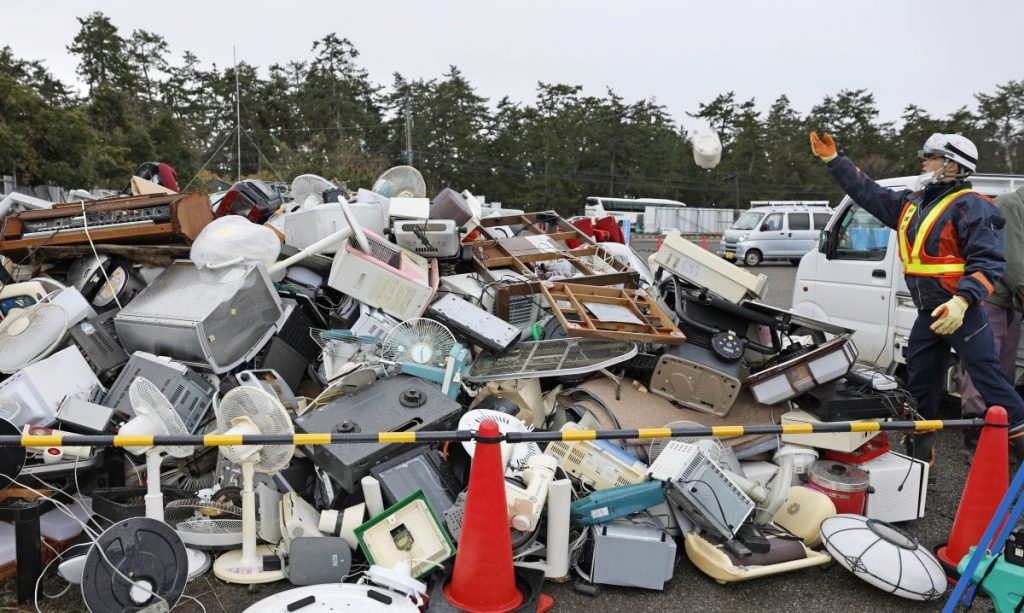
Disaster waste from a temporary storage site being moved to containers using heavy machinery in Anamizu Town, Ishikawa Prefecture, on January 28, 2024. (©Sankei by Kotaro Hikono)
Read the full story on Japan 2 Earth - Disaster Waste: Miyagi Prefecture Shares Cleanup Expertise in the Noto Quake Aftermath
Dealing with disaster waste in Ishikawa Prefecture is a big issue. Debris from buildings that collapsed in the Noto Peninsula earthquake and other disaster waste is estimated at 2.44 million tons. Miyagi Prefecture aims to provide support with its "Higashi-Matsushima method" used in the aftermath of the Great East Japan Earthquake of 2011. Despite suffering devastating damage from the massive tsunami, the city of Higashi-Matsushima employed a miraculous disposal method to achieve an early recovery.
Sharing Know-How
"Not only did we manage to clean up and dispose of the waste, but we also linked this to employment for locals. Our methods applied an approach that is now associated with the SDGs. We want to share Higashi-Matsushima's know-how."

So explained Yoshihiro Murai, governor of Miyagi Prefecture at a press conference on February 7. The prefecture has dispatched four employees with expertise in disaster waste disposal to the area affected by the recent quake.
The Higashi-Matsushima method was originally implemented in Higashi-Matsushima, a city on the Pacific coast. A total of 1,110 people from the city lost their lives in 2011, and 23 are still missing. Over 11,000 houses were damaged, with about 65% of the city area inundated by the tsunami.
Continue reading the full story on Japan 2 Earth to learn more about innovative methods for treating disaster waste.
And find more great articles on the environment and the challenges of achieving the SDGs on our affiliated website Japan 2 Earth (J2E), sparking a transition to a sustainable future.
RELATED:
- EDITORIAL | Effective Noto Peninsula Earthquake Response Hinges on Great Hanshin Earthquake Lessons
- New Year's Earthquake: Disaster Resilience is a Societal Responsibility
- Beautiful Wajima Lacquerware Found Under Market Rubble After Earthquake
(Read the article in Japanese.)
Author: The Sankei Shimbun








